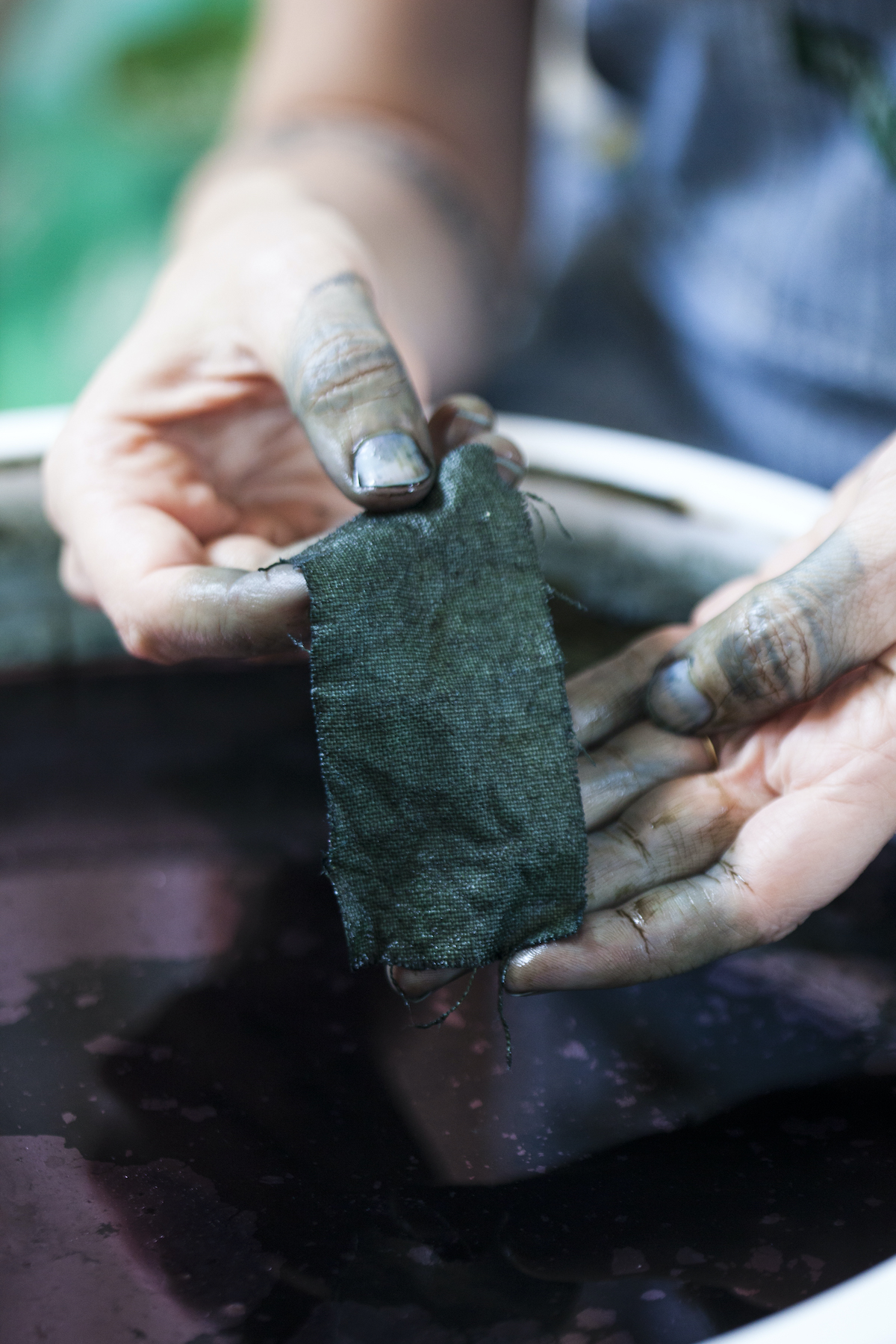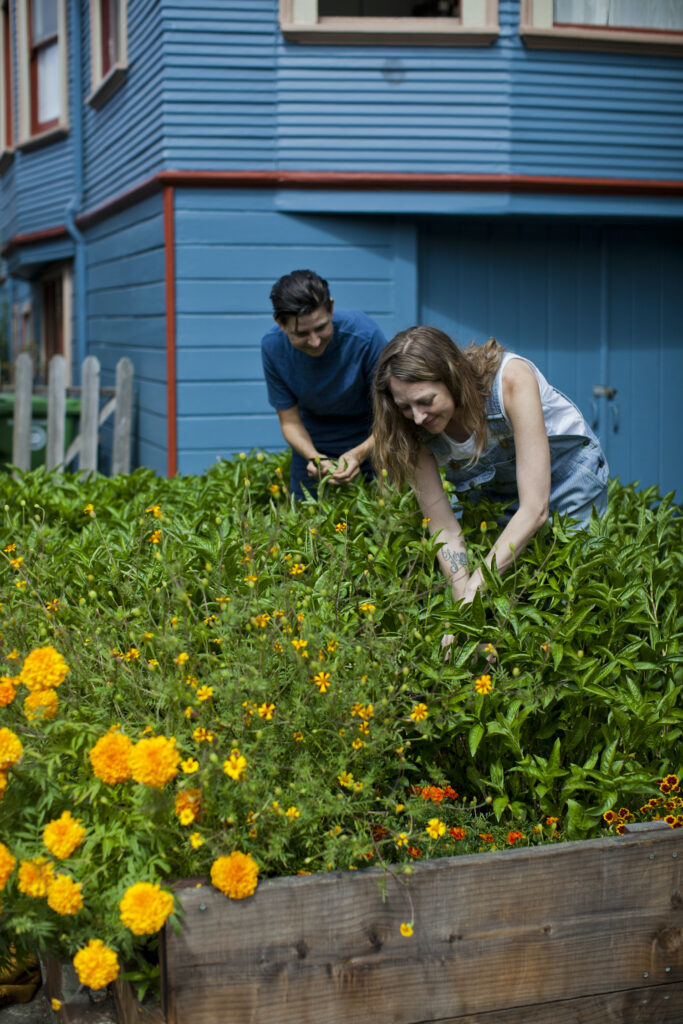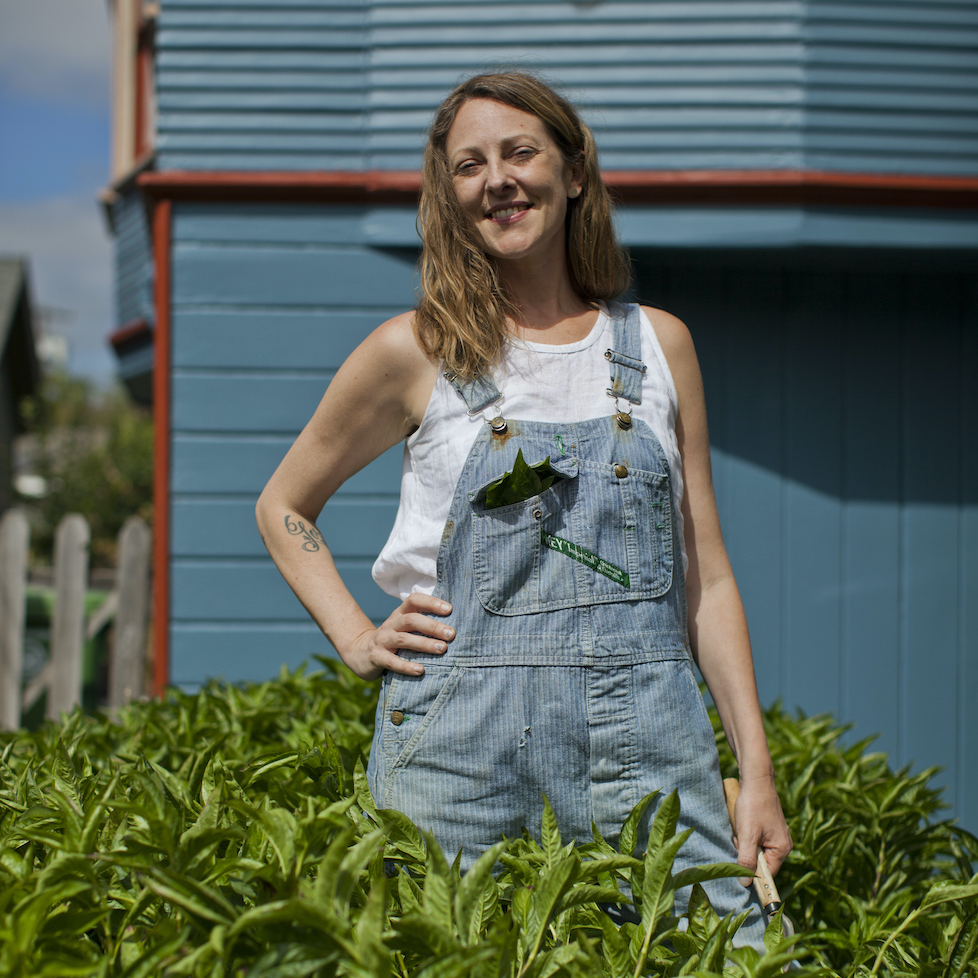
The journey to create this long blue swath of cloth is a marker of time, of confusion, of epiphanies, of physical pain, of endurance, of curiosity.



Blue Continuum
Most of our book, Journeys in Natural Dyeing, is about sampling, collecting, documenting, and archiving moments between the bond and impression of nature and time upon cloth in the form of color, texture, and shape. The book describes the practice of possibility and wonder, reflecting our own need for quiet and connection to nature in a loud, busy world. It portrays our desire to be self-reliant in a world where we have been made to believe that we need a plethora of material objects to survive. The journey to create this long blue swath of cloth is a marker of time, of confusion, of epiphanies, of physical pain, of endurance, of curiosity.
Adrienne and I have been together since 2002. And our shared love of joint projects has kept us going. The practice of growing and processing indigo into dye combines our familial histories; Adrienne’s parents and grandparents worked in the California fields harvesting produce; my family sewed clothing and homewares in the Midwest. So both of us appreciate and feel connected with our food and our clothing: where they come from and those who are involved in their making.
Indigo blue has long been my favorite color, and it reminds me of water. My mind tends to churn, to crunch, to chew; and even the smallest amount of water calms and soothes. I spent my childhood in Minnesota, surrounded by lakes, each season relishing the various textures and colors of the waters. Coming to California, meeting the Pacific Ocean for the first time, I felt a deep pull and a desire to spend time, to study its moods, and the ways in which its color shifts based upon depth and light. Though I rarely touch the chilly water, the briskness of the wind coming off the ocean while I walk on the beach cleanses whatever hot thoughts cross my mind, a reprieve from my mental will to grind. My internal temperature is reset. I can rest.
The first indigo vat I made used indigo pigment, extracted in India from the Indigofera tinctoria plant. For indigo pigment to become water soluble and attach to cloth, the pH of the vat must be raised, and the amount of oxygen reduced. Making this first vat, we used lye and sodium hydrosulphite, a chemical process that takes about 30 minutes. Once the vat is complete, the dyeing process can begin: dipping material into the vat for five minutes, removing it, and allowing it to rest for five minutes. This process is repeated to create darker shades.
The more I learn and understand the way the natural world works, the more at ease I feel in the world. Discovery engages my mind, and quiets the churn.
Adrienne and I began to wonder more about the connection between indigo pigment and the plant that it comes from, wanting to understand the process of extraction. We learned that a variety of plants contain the pigment, and that there are myriad ways that people extract the indigo to create vats and dye textiles. We began to wonder if there could be a way to complete this process in a natural way, locally.
Learning a new process is punctuated by joyful surprises along the way. So much of how we created this textile has involved working our way through the nuts and bolts of learning basic chemistry. I had zero interest in chemistry while in school, so I was shocked to discover how curious I was. The more I learn and understand the way the natural world works, the more at ease I feel in the world. Discovery engages my mind, and quiets the churn.
The textile featured is a marking of the seasons. The process starts on January 1st, at our home in Oakland, California. In our front yard, we have a small patch of land. We till the soil and plant fava beans to fix nitrogen in the soil. After a couple months, we harvest, chop, and till the fava into the soil. We then plant Persicaria tinctoria. Over the Summer, we harvest the plant twice, removing the leaves from the stalks, drying them, and chopping them into small pieces. Over three months, we compost the leaves into a material resembling dirt, monitoring the heat of the compost, and rotating it at least once a week to ensure that it degrades evenly. In the Fall and Winter, we dye. We take hard wood ash – procured from a local restaurant with a wood-fired oven – and pour water through it to create an alkaline bath. We combine the compost with this water and add wheat bran and limestone, slowly, incrementally, for about two weeks, observing the signs of fermentation in the vat. Once the vat is full and fermenting, it is of dire importance to keep the bacteria within it healthy, because they are what make the indigo water-soluble, giving us blue. Only a few hundred grams of cloth can be dipped a day. This process is based upon that practiced at BUAISOU in Tokushima, Japan.
Like all natural bodies of water, this indigo vat is temperamental and ever-changing. It is responsive and reactive. We converse.

Our method calls for 100 square feet of space, the amount that we have in our front yard, and a quantity that we felt others without access to land could locate through a community garden. Our process differs from BUAISOU’s (and many others) in scale. While BUAISOU composts about 300 pounds of dry leaves at a minimum, we use 40 pounds. Their process requires 1800 pounds of freshly harvested plants, land, labor, and coordination, whereas a single person could complete ours, alone. I work often with the public, and a desire for balance encourages me to work independently in my practice. I have chronic pain from years of overworking my body to create textiles, so to work on a small scale is also imperative to the health of my body.
Experimenting with the composting and fermenting on this smaller scale initially caused trepidation, as both processes typically benefit from critical mass. However, step by step, the pieces came together, and in our book we have documented complete instructions to work on a much smaller scale. We hope this will allow many others to access the incredible process of creating homegrown indigo.
The gradient of blues upon the textile shows the shades of blue possible with the vat, and reflects how many dips into the indigo vat it has made over how many days. This piece of cloth was dipped into the indigo vat three times a day for fifteen days, successively, moving down the cloth in two inch increments.
Like all natural bodies of water, this indigo vat is temperamental and ever-changing. It is responsive and reactive. We converse. I am drawn to the mystery of learning what it wants to offer daily when I check its temperature, feel its viscosity, and learn how to care for it. The range of blues from this type of vat is vast. This process that combines water, air, heat, and time: to witness and be with these common elements is to witness and be with my humanity. My breath. My mortality.

Kristine Vejar is a natural dyer, gardener, artist, teacher, and author of The Modern Natural Dyer. She and her wife, Adrienne Rodriguez co-wrote Journeys in Natural Dyeing and co-own A Verb for Keeping Warm, a center for textiles located in Oakland, California. Their work focuses on plants, textiles, and the act of making as a sustainable art practice that highlights the beauty of nature and the preservation of textile techniques. They enjoy meeting people from around the world who also love and care for nature and community via textiles. When not in their studio, they can be found with their dog, Calliope Piccolo, foraging for mushrooms in the woods, or taking in the Pacific Ocean’s vast beauty.
To learn more about the work of Kristine Vejar visit averbforkeepingwarm.com / @avfkw
